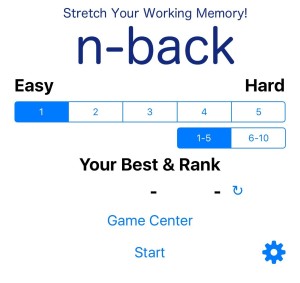By Albine Klawatsch, Occupational Therapist, Certified Dyslexia Trainer
 What is working memory? Working memory combines what you know with what you can temporarily hold on to, in order to successfully accomplish an immediate task. A simple example of this would be remembering items on a grocery list while simultaneously scanning the store’s shelves and pushing the cart down various food aisles. This simple task requires us to store immediate experiences, receive information from our long-term memory, and process all incoming sensory information. Working memory also utilizes a person’s auditory and visual-spatial memories. There are many processes at work – all to help us reason and make decisions in real time.
What is working memory? Working memory combines what you know with what you can temporarily hold on to, in order to successfully accomplish an immediate task. A simple example of this would be remembering items on a grocery list while simultaneously scanning the store’s shelves and pushing the cart down various food aisles. This simple task requires us to store immediate experiences, receive information from our long-term memory, and process all incoming sensory information. Working memory also utilizes a person’s auditory and visual-spatial memories. There are many processes at work – all to help us reason and make decisions in real time.
Working memory significantly impacts a child’s learning abilities, particularly within the academic areas of reading, mathematics, and science. Children experiencing difficulties with working memory are hard to identify, as they usually demonstrate age-appropriate social skills. Below are some example behaviors that can be indicative of underlying working memory issues:
- Reserved during group activities and seldom volunteers.
- Consistently forgets bits of information.
- Seems not to pay attention to the instructions given.
- Rarely completes tasks to which one is assigned.
- Abandons complicated tasks.
- Poor academic performance.
- Easily distracted or has a short attention span.
It is important to state that the behaviors listed above are commonly seen in all children at one point or another throughout childhood; concerns arise if more than one of these behaviors is consistently observed on a daily basis.
The good news is that memory skills can be practiced, and one can train the brain to enhance ‘working memory’. This brings us to the App Of The Month – n-back, which aims to strengthen an individual’s working memory and focus. The game presents rapidly changing information to the player and indulges them in continuous performance tasks.
The levels can be set from easy to hard. The settings allow the user to switch on the screen flash or vibration for increased sensory-motor stimuli.
 The games within the app require the players to perform mental flexibility tasks in the form of simple arithmetic calculations, and at the same time recall bits of information from the previous steps: n-back. For example, the previous step is referred to as 1 back. Similarly, n-2 or 2 back is two sequences earlier.
The games within the app require the players to perform mental flexibility tasks in the form of simple arithmetic calculations, and at the same time recall bits of information from the previous steps: n-back. For example, the previous step is referred to as 1 back. Similarly, n-2 or 2 back is two sequences earlier.
Tasks are timed, and track an individual’s best time and rank among other app users. The player can reset the time and task if he or she is unable to complete it, and practice again.
The n-back technique aims to support children who demonstrate difficulties with working memory, such as children with ADHD and also those who have suffered a brain injury. Some researchers have found that n-back impacts a child’s intelligence by as much as 3 to 4 IQ points. However, other researchers have raised questions on whether the effects of training are transient or long-term, and if transferability to daily activities is plausible. Nevertheless, the benefits of training through the n-back task cannot be overlooked.
Click here to download for iOS.
Albine Klawatsch, M.Sc
Occupational Therapist, Certified Dyslexia Trainer
Albine is an Occupational Therapist at The Essential Learning Group, working in different cities around Shanghai. She has extensive experience in the field of neuro-pediatrics, in particular cerebral palsy. She has also treated children with mild to severe developmental delays.

